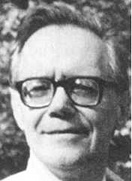 The New York Times has an obituary for the founder of cognitive psychology, Ulric Neisser. As with most of his obituaries it glosses over the fact that Neisser later rejected cognitive psychology as a means to fully understand the human mind.
The New York Times has an obituary for the founder of cognitive psychology, Ulric Neisser. As with most of his obituaries it glosses over the fact that Neisser later rejected cognitive psychology as a means to fully understand the human mind.
Ulric Neisser is widely regarded as having founded the field with his 1967 book Cognitive Psychology. Although the principles of the science existed before – experimental methods, information processing theories, artificial intelligence modelling – Neisser was the first to combine them into a coherent whole.
The book was hugely influential to the point where cognitive psychology has become the de facto scientific psychology and the has at least partially integrated into virtually every theory of the mind.
But less known is that Neisser wrote a 1976 book called Cognition and Reality that criticised cognitive science for being unable to capture the richness of human psychology through lab-based methods and reducing lived experience to what were essentially computer models of the mind.
The New York Times describes it like this:
His contrariness extended to his own work. In 1976, he wrote “Cognition and Reality,” a book that challenged much of the field of cognitive psychology, arguing that it ignored the real world in favor of the laboratory.
This was certainly no ‘contrariness’. The book is a cutting critique and insightfully captures many of the problems with cognitive psychology, most of which were only ‘rediscovered’ in the 90s and 2000s as embodied cognition and network analysis started to look beyond the ‘disembodied mind is made of computer modules’ idea.
Later Neisser began to believe that while cognitive psychology had developed some useful tools, we have to apply them to the real world to understand ourselves, and he began to argue for the necessity of ecological psychology that stresses the importance of understanding what our environment demands of us in terms of behaviour and perception.
Link to NYT obituary for Ulric Neisser.